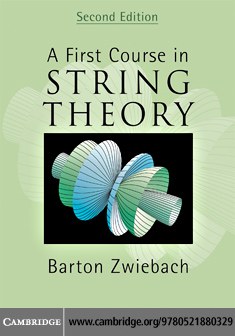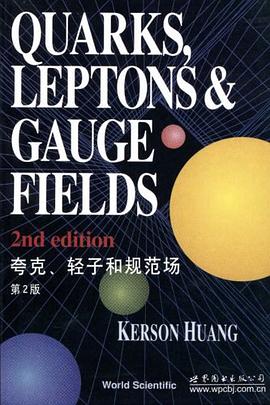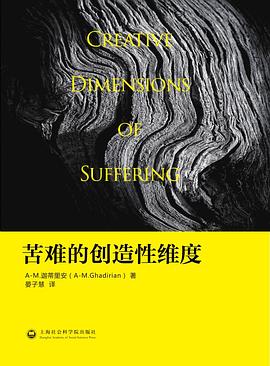
A First Course in String Theory 2ED pdf epub mobi txt 电子书 下载 2025
- String
- 弦论
- 物理
- 自然科学
- 物理学
- 弦论7
- 量子场论
- 研二上
- String Theory
- Theoretical Physics
- Quantum Field Theory
- Advanced Physics
- Physics
- Mathematics
- String Theory 2nd Edition
- Barton Zwiebach
- Graduate Level
- Textbook

具体描述
Barton Zwiebach is once again faithful to his goal of making string theory accessible to undergraduates. He presents the main concepts of string theory in a concrete and physical way to develop intuition before formalism, often through simplified and illustrative examples. Complete and thorough in its coverage, this new edition now includes the AdS/CFT correspondence and introduces superstrings. It is perfectly suited to introductory courses in string theory for students with a background in mathematics and physics.
This new edition contains completely new chapters on the AdS/CFT correspondence, an introduction to superstrings, and new sections covering strings on orbifolds, cosmic strings, moduli stabilization, and the string theory landscape. There are almost 300 problems and exercises, with password protected solutions available to instructors at www.cambridge.org/zwiebach.
作者简介
Barton Zwiebach is Professor of Physics at the Massachusetts Institute of Technology.
His central contributions have been in the area of string field theory, where he did the
early work on the construction of the field theory of open strings and then developed the field theory of closed strings. He has also made important contributions to the subjects of D-branes with exceptional symmetry and tachyon condensation.
目录信息
From the Preface to the First Edition xv
Preface to the Second Edition xix
Part I Basics 1
1 A brief introduction 3
1.1 The road to unification 3
1.2 String theory as a unified theory of physics 6
1.3 String theory and its verification 9
1.4 Developments and outlook 11
2 Special relativity and extra dimensions 13
2.1 Units and parameters 13
2.2 Intervals and Lorentz transformations 15
2.3 Light-cone coordinates 22
2.4 Relativistic energy and momentum 26
2.5 Light-cone energy and momentum 28
2.6 Lorentz invariance with extra dimensions 30
2.7 Compact extra dimensions 31
2.8 Orbifolds 35
2.9 Quantum mechanics and the square well 36
2.10 Square well with an extra dimension 38
3 Electromagnetism and gravitation in various dimensions 45
3.1 Classical electrodynamics 45
3.2 Electromagnetism in three dimensions 47
3.3 Manifestly relativistic electrodynamics 48
3.4 An aside on spheres in higher dimensions 52
3.5 Electric fields in higher dimensions 55
3.6 Gravitation and Planck’s length 58
3.7 Gravitational potentials 62
3.8 The Planck length in various dimensions 63
3.9 Gravitational constants and compactification 64
3.10 Large extra dimensions 67
4 Nonrelativistic strings 73
4.1 Equations of motion for transverse oscillations 73
4.2 Boundary conditions and initial conditions 75
4.3 Frequencies of transverse oscillation 76
4.4 More general oscillating strings 77
4.5 A brief review of Lagrangian mechanics 78
4.6 The nonrelativistic string Lagrangian 81
5 The relativistic point particle 89
5.1 Action for a relativistic point particle 89
5.2 Reparameterization invariance 93
5.3 Equations of motion 94
5.4 Relativistic particle with electric charge 97
6 Relativistic strings 100
6.1 Area functional for spatial surfaces 100
6.2 Reparameterization invariance of the area 103
6.3 Area functional for spacetime surfaces 106
6.4 The Nambu-Goto string action 111
6.5 Equations of motion, boundary conditions, and D-branes 112
6.6 The static gauge 116
6.7 Tension and energy of a stretched string 118
6.8 Action in terms of transverse velocity 120
6.9 Motion of open string endpoints 124
7 String parameterization and classical motion 130
7.1 Choosing a σ parameterization 130
7.2 Physical interpretation of the string equation of motion 132
7.3 Wave equation and constraints 134
7.4 General motion of an open string 136
7.5 Motion of closed strings and cusps 142
7.6 Cosmic strings 145
8 World-sheet currents 154
8.1 Electric charge conservation 154
8.2 Conserved charges from Lagrangian symmetries 155
8.3 Conserved currents on the world-sheet 159
8.4 The complete momentum current 161
8.5 Lorentz symmetry and associated currents 165
8.6 The slope parameter α 168
9 Light-cone relativistic strings 175
9.1 A class of choices for τ 175
9.2 The associated σ parameterization 178
9.3 Constraints and wave equations 182
9.4 Wave equation and mode expansions 183
9.5 Light-cone solution of equations of motion 186
10 Light-cone fields and particles 194
10.1 Introduction 194
10.2 An action for scalar fields 195
10.3 Classical plane-wave solutions 197
10.4 Quantum scalar fields and particle states 200
10.5 Maxwell fields and photon states 206
10.6 Gravitational fields and graviton states 209
11 The relativistic quantum point particle 216
11.1 Light-cone point particle 216
11.2 Heisenberg and Schr¨odinger pictures 218
11.3 Quantization of the point particle 220
11.4 Quantum particle and scalar particles 225
11.5 Light-cone momentum operators 226
11.6 Light-cone Lorentz generators 229
12 Relativistic quantum open strings 236
12.1 Light-cone Hamiltonian and commutators 236
12.2 Commutation relations for oscillators 241
12.3 Strings as harmonic oscillators 246
12.4 Transverse Virasoro operators 250
12.5 Lorentz generators 259
12.6 Constructing the state space 262
12.7 Equations of motion 268
12.8 Tachyons and D-brane decay 270
13 Relativistic quantum closed strings 280
13.1 Mode expansions and commutation relations 280
13.2 Closed string Virasoro operators 286
13.3 Closed string state space 290
13.4 String coupling and the dilaton 294
13.5 Closed strings on the R1/Z2 orbifold 296
13.6 The twisted sector of the orbifold 298
14 A look at relativistic superstrings 307
14.1 Introduction 307
14.2 Anticommuting variables and operators 308
14.3 World-sheet fermions 309
14.4 Neveu−Schwarz sector 312
14.5 Ramond sector 315
14.6 Counting states 317
14.7 Open superstrings 320
14.8 Closed string theories 322
Part II Developments 329
15 D-branes and gauge fields 331
15.1 Dp-branes and boundary conditions 331
15.2 Quantizing open strings on Dp-branes 333
15.3 Open strings between parallel Dp-branes 338
15.4 Strings between parallel Dp- and Dq-branes 345
16 String charge and electric charge 356
16.1 Fundamental string charge 356
16.2 Visualizing string charge 362
16.3 Strings ending on D-branes 365
16.4 D-brane charges 370
17 T-duality of closed strings 376
17.1 Duality symmetries and Hamiltonians 376
17.2 Winding closed strings 378
17.3 Left movers and right movers 381
17.4 Quantization and commutation relations 383
17.5 Constraint and mass formula 386
17.6 State space of compactified closed strings 388
17.7 A striking spectrum coincidence 392
17.8 Duality as a full quantum symmetry 394
18 T-duality of open strings 400
18.1 T-duality and D-branes 400
18.2 U(1) gauge transformations 404
18.3 Wilson lines on circles 406
18.4 Open strings and Wilson lines 410
19 Electromagnetic fields on D-branes 415
19.1 Maxwell fields coupling to open strings 415
19.2 D-branes with electric fields 418
19.3 D-branes with magnetic fields 423
20 Nonlinear and Born−Infeld electrodynamics 433
20.1 The framework of nonlinear electrodynamics 433
20.2 Born−Infeld electrodynamics 438
20.3 Born−Infeld theory and T-duality 443
21 String theory and particle physics 451
21.1 Intersecting D6-branes 451
21.2 D-branes and the Standard Model gauge group 457
21.3 Open strings and the Standard Model fermions 463
21.4 The Standard Model on intersecting D6-branes 472
21.5 String theory models of particle physics 479
21.6 Moduli stabilization and the landscape 481
22 String thermodynamics and black holes 495
22.1 A review of statistical mechanics 495
22.2 Partitions and the quantum violin string 498
22.3 Hagedorn temperature 505
22.4 Relativistic particle partition function 507
22.5 Single string partition function 509
22.6 Black holes and entropy 513
22.7 Counting states of a black hole 517
23 Strong interactions and AdS/CFT 525
23.1 Introduction 525
23.2 Mesons and quantum rotating strings 526
23.3 The energy of a stretched effective string 531
23.4 A large-N limit of a gauge theory 533
23.5 Gravitational effects of massive sources 535
23.6 Motivating the AdS/CFT correspondence 537
23.7 Parameters in the AdS/CFT correspondence 541
23.8 Hyperbolic spaces and conformal boundary 543
23.9 Geometry of AdS and holography 549
23.10 AdS/CFT at finite temperature 554
23.11 The quark–gluon plasma 559
24 Covariant string quantization 568
24.1 Introduction 568
24.2 Open string Virasoro operators 570
24.3 Selecting the quantum constraints 572
24.4 Lorentz covariant state space 577
24.5 Closed string Virasoro operators 580
24.6 The Polyakov string action 582
25 String interactions and Riemann surfaces 591
25.1 Introduction 591
25.2 Interactions and observables 592
25.3 String interactions and global world-sheets 595
25.4 World-sheets as Riemann surfaces 598
25.5 Schwarz−Christoffel map and three-string interaction 602
25.6 Moduli spaces of Riemann surfaces 608
25.7 Four open string interaction 617
25.8 Veneziano amplitude 622
26 Loop amplitudes in string theory 630
26.1 Loop diagrams and ultraviolet divergences 630
26.2 Annuli and one-loop open strings 631
26.3 Annuli and electrostatic capacitance 636
26.4 Non-planar open string diagrams 642
26.5 Four closed string interactions 643
26.6 The moduli space of tori 646
References 659
Index 667
· · · · · · (收起)
读后感
评分
评分
评分
评分
用户评价
有点Sakurai的《现代量子力学》的感觉,只要上过本科物理课程就可以学懂,数学深入浅出。快速计算和习题有《复分析:可视化教程》的风格。
评分有点Sakurai的《现代量子力学》的感觉,只要上过本科物理课程就可以学懂,数学深入浅出。快速计算和习题有《复分析:可视化教程》的风格。
评分有点Sakurai的《现代量子力学》的感觉,只要上过本科物理课程就可以学懂,数学深入浅出。快速计算和习题有《复分析:可视化教程》的风格。
评分有点Sakurai的《现代量子力学》的感觉,只要上过本科物理课程就可以学懂,数学深入浅出。快速计算和习题有《复分析:可视化教程》的风格。
评分有点Sakurai的《现代量子力学》的感觉,只要上过本科物理课程就可以学懂,数学深入浅出。快速计算和习题有《复分析:可视化教程》的风格。
相关图书
本站所有内容均为互联网搜索引擎提供的公开搜索信息,本站不存储任何数据与内容,任何内容与数据均与本站无关,如有需要请联系相关搜索引擎包括但不限于百度,google,bing,sogou 等
© 2025 book.wenda123.org All Rights Reserved. 图书目录大全 版权所有




















